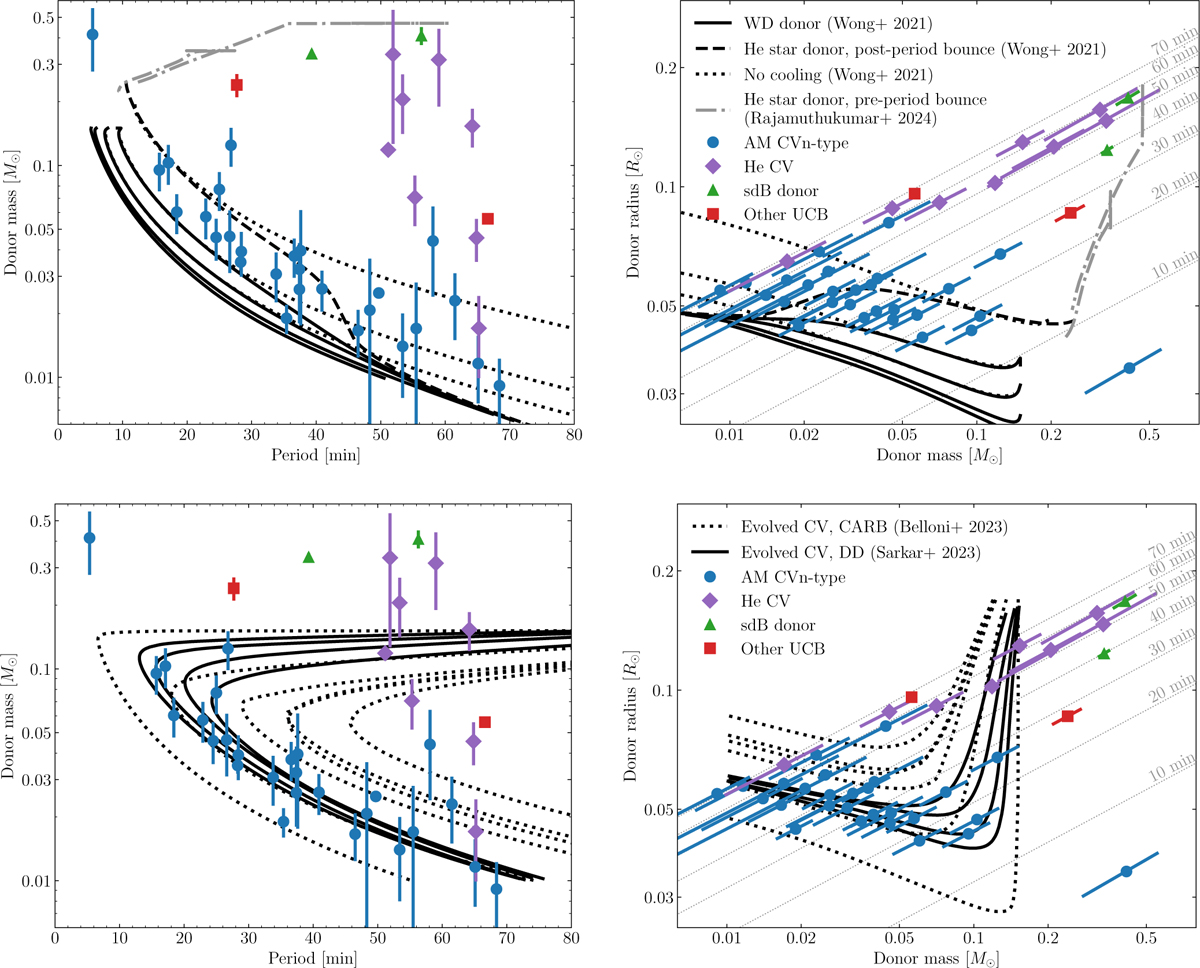Fig. 13

Download original image
Measured orbital periods and donor star masses and radii for mass-transferring UCBs in the catalogue. In the left panels, we plot the observed properties: orbital period and donor mass. In the right panels, we plot donor mass and radius. Uncertainties in the right panels are diagonal because of the strong constraint on donor density that arises from the orbital period. The two systems plotted with red squares are the brown dwarf donor SDSS J1507+5230 and the 30 min supernova progenitor candidate ATLAS J1138-5139. We also plot several evolutionary tracks from different scenarios, as discussed in the text: the upper panels show evolutionary models of the white dwarf and helium star donor tracks, while the lower panels show evolutionary models from the evolved CV scenario. The systems without hydrogen (AMCVn-type binaries) follow a sequence from short to long orbital periods, while He CVs with hydrogen follow a different sequence from low to high masses. In general, any formation scenario can explain at least some fraction of the known systems, and no single formation scenario can explain every system.
Current usage metrics show cumulative count of Article Views (full-text article views including HTML views, PDF and ePub downloads, according to the available data) and Abstracts Views on Vision4Press platform.
Data correspond to usage on the plateform after 2015. The current usage metrics is available 48-96 hours after online publication and is updated daily on week days.
Initial download of the metrics may take a while.


